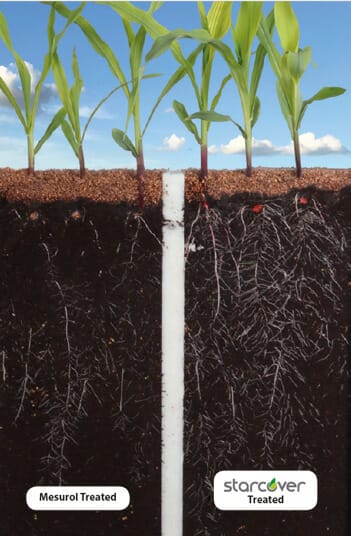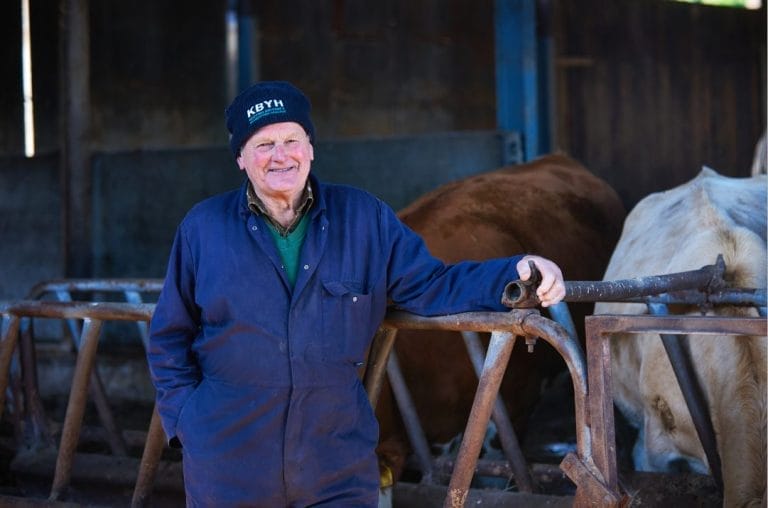 “The 2019 growing season was a good example of the potential risks faced by maize growers,” he comments. “Where harvest was delayed, the quality of the resultant feed was reduced, while in some cases crops were never harvested at all. In addition, many successor crops were not drilled, affecting rotations and leaving stubbles over-winter.
“The 2019 growing season was a good example of the potential risks faced by maize growers,” he comments. “Where harvest was delayed, the quality of the resultant feed was reduced, while in some cases crops were never harvested at all. In addition, many successor crops were not drilled, affecting rotations and leaving stubbles over-winter.
“In other years, farmers have to manage the risk of a poor or slow crop establishment and this could be an issue in 2020 given the very wet, early winter and current soil conditions.
“The skill is in reducing these risks and technological developments will help with this.”
Whether you are in a favourable or less favourable area, he says there are basically three core objectives:
1. The first is to grow a variety that will mature early to increase the prospects of getting it harvested in good time and allow a successor crop to be established.
2. The second is to ensure you produce the best yield of high-quality feed.
3. Finally you want feed available to include in the diet as early as possible.
All these are driven by variety selection and have been the focus of breeding programmes. He says selecting early over late varieties can bring harvest forward by over two weeks, explaining that  early maturing varieties require fewer Ontario Heat Units to mature. Making use of Met Office data, farmers can now look up the average heat units accumulated in their area and use this to help improve the effectiveness of variety selection.
early maturing varieties require fewer Ontario Heat Units to mature. Making use of Met Office data, farmers can now look up the average heat units accumulated in their area and use this to help improve the effectiveness of variety selection.
“Identifying a variety that will receive sufficient OHU to mature in your area, combined with good early vigour, is the starting point to managing risk associated with the crop.
“When making the variety decision, farmers have to consider a wide range of factors including maturity date, agronomic factors, yield and quality which can make it a challenging decision, with a significant range of varieties available. Getting the choice right can have a major impact on the quality and quantity of forage produced which will have a big impact on performance and margins.”
significant range of varieties available. Getting the choice right can have a major impact on the quality and quantity of forage produced which will have a big impact on performance and margins.”
To help farmers make full use of data to ensure they select the optimum variety, the LG Maize Variety Selection Guide contains data on all the varieties on the 2020 BSPB/NIAB Descriptive Lists with data presented in easy to understand charts, allowing quick comparison between varieties.
Tables provide information on quality characteristics, including cell wall digestibility and starch content, enabling choices to be made to maximise the total feeding quality of maize silage. Vital agronomic information such as lodging, maturity and early vigour data is also included.
Mr Richmond predicts new developments in biological seed treatments can further improve speed of establishment and season long growth. He explains that there is increased interest in the use of biological treatments, given the phasing out of the current mainstream seed dressings. He says most seed dressings had been marketed as bird repellents and that while biological dressings will not specifically repel birds, they help reduce the risk by getting crops established quickly.
 He says Starcover, which is available for the first time this year, is an example of the new technologies available. It combines a plant extract that accelerates root development and increases root number and length, with plant growth promoting bacteria that help improve nutrient uptake and boost early plant growth.
He says Starcover, which is available for the first time this year, is an example of the new technologies available. It combines a plant extract that accelerates root development and increases root number and length, with plant growth promoting bacteria that help improve nutrient uptake and boost early plant growth.
“In trials over several years, treated crops have had 18% more roots than untreated plants and when harvested, treated plants yielded between 3-7% more dry matter per hectare.
“By embracing new technologies, maize growers will be able to increase the prospects of high yielding, good quality feeds harvested on time and incorporated into diets quickly.”
See how Starcover works…

































